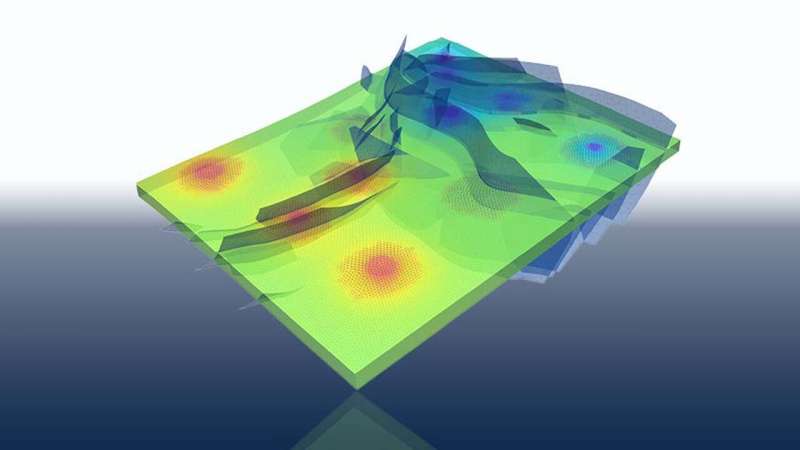This article has been reviewed according to Science X's editorial process and policies. Editors have highlighted the following attributes while ensuring the content's credibility:
fact-checked
trusted source
proofread
A simulator will soon predict the fate of carbon dioxide underground

Before you decide on a specific geographical location for underground carbon storage, it is good to know exactly what you are setting in motion, both with injection, i.e. the process of pumping the greenhouse gas into the underground, and over time—for up to hundreds of years—while the gas is down there.
This requires the ability to make fairly accurate predictions based on knowledge about the geological conditions in the subsurface, as well as how CO2 behaves under different pressure and temperature conditions, and how the greenhouse gas can react chemically with other substances in the underground.
The necessary predictions can be made using a simulator, which is a highly sophisticated computer program. A group of chemistry researchers from DTU is now expanding the GEOS carbon storage simulator to include, among other things, their expert knowledge on geochemical reactions. GEOS is an open-source tool originally developed by Lawrence Livermore National Laboratory, Stanford University, and TotalEnergies.
Algorithms calculate chemical reactions
The researchers' work is part of the large green partnership INNO-CCUS.
"For many years, our group at DTU Chemistry has developed algorithms that can calculate the progress of chemical reactions, and in this project we can contribute algorithms that calculate how CO2 will behave under different temperatures, pressures, and in the encounter with other substances in the subsurface, such as salty water, minerals, or hydrocarbons, which are typical residues in a decommissioned oil and gas reservoir," says Associate Professor Wei Yan, who spearheads DTU's contribution to the project.
With these simulations, it will also be possible to assess whether the planned injection may be compromised by unwanted phenomena.
"Various adverse chemical reactions may occur when CO2 is injected. For example, if salty water is present, a precipitate of the salt may occur and lead to blockages in the wells that provide access to the subsurface. This knowledge can help provide an accurate picture of how much CO2 you can store in a certain location, and how quickly you can perform the task. This is information that can ultimately determine whether the site is suitable for carbon storage," Yan adds.
Predicting several hundred years into the future
If the site is suitable, simulations can also predict how the CO2 will spread in the underground after the injection, as well as how the greenhouse gas stabilizes over time—for up to hundreds of years—both geologically and chemically. Knowledge about both can help keep the greenhouse gas trapped for a long time, which is the entire purpose of storing it.
The researchers have until 2027 to develop the simulation program. The program will then be released and offered as a free tool, which can be used by anyone to decide future locations for carbon storage.
Provided by Technical University of Denmark





















